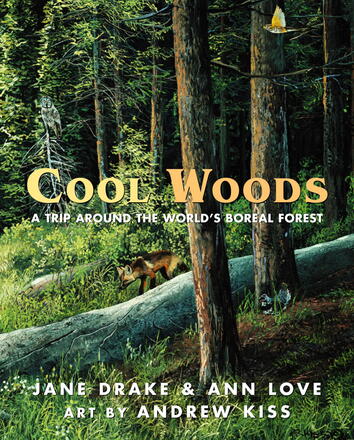
Cool Woods
A Trip around the World's Boreal Forest
Description
Winner of the Skipping Stones Honor Award in the Ecology and Nature Books category
The boreal forest is the last great forest wilderness on earth. It drapes across the subarctic right around the world. It pervades our myths and folklore. It provides us with wood and water. It freshens the very air we breathe.
Jane Drake and Ann Love take the reader on an unforgettable journey around the world to view the boreal forest. They show the reader the seasons in the bush, the science and myth of wolves, the life cycle of the woods. From the Siberian Taiga, where tigers and sika deer live, to the Old World forests of Norway, from the Boreal Shield of North America to the birch forest of Northwest Russia, we are introduced to a region of incredible importance. Despite our reliance on it, we have placed the “lungs of the earth” under siege with clear-cutting, acid rain, and even radioactivity.
Cool Woods is not only informative and beautiful, but it is a call to action to anyone who cares about our planet.
Reviews
“…totally right on…”
–The Globe and Mail
“The design and engaging writing style make this book fresh and appealing. Highly Recommended. ”
–CM Magazine
“…informative and beautiful…. The text conveys a sense of wonder along with its many facts…. [L]ovingly detailed paintings…teem with life…. [T]he authors provide a glossary, an index, and an indispensable map for this intriguing trip, and many young readers will be inspired to find out more. ”
–Quill & Quire